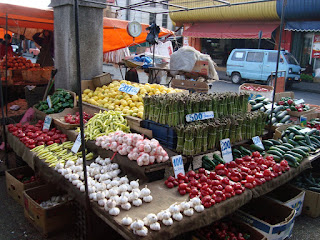The dirty dozen and the clean fifteen
The following comes from the EWG's 2016 Shopper's Guide to Pesticides in Produce™:
"This year, includes strawberries, apples, nectarines, peaches, celery, grapes, cherries, spinach, tomatoes, sweet bell peppers, cherry tomatoes, and cucumbers. Each of these foods tested positive for a number of different pesticide residues and showed higher concentrations of pesticides than other produce.
Key findings:
- More than 98 percent of strawberry samples, peaches, nectarines, and apples tested positive for at least one pesticide residue.
- The average potato had more pesticides by weight than any other produce.
- A single grape sample and a sweet bell pepper sample contained 15 pesticides.
- Single samples of strawberries showed 17 different pesticides"
- avocados,
- sweet corn,
- pineapples,
- cabbage,
- frozen sweet peas,
- onions,
- asparagus,
- mangoes,
- papayas,
- kiwis,
- eggplant,
- honeydew melon,
- grapefruit,
- cantaloupe,
- and cauliflower
To take it a step further, here is the list ofEWG's Clean Fifteen™ (the produce least likely to hold pesticide residues):



Comments
Post a Comment